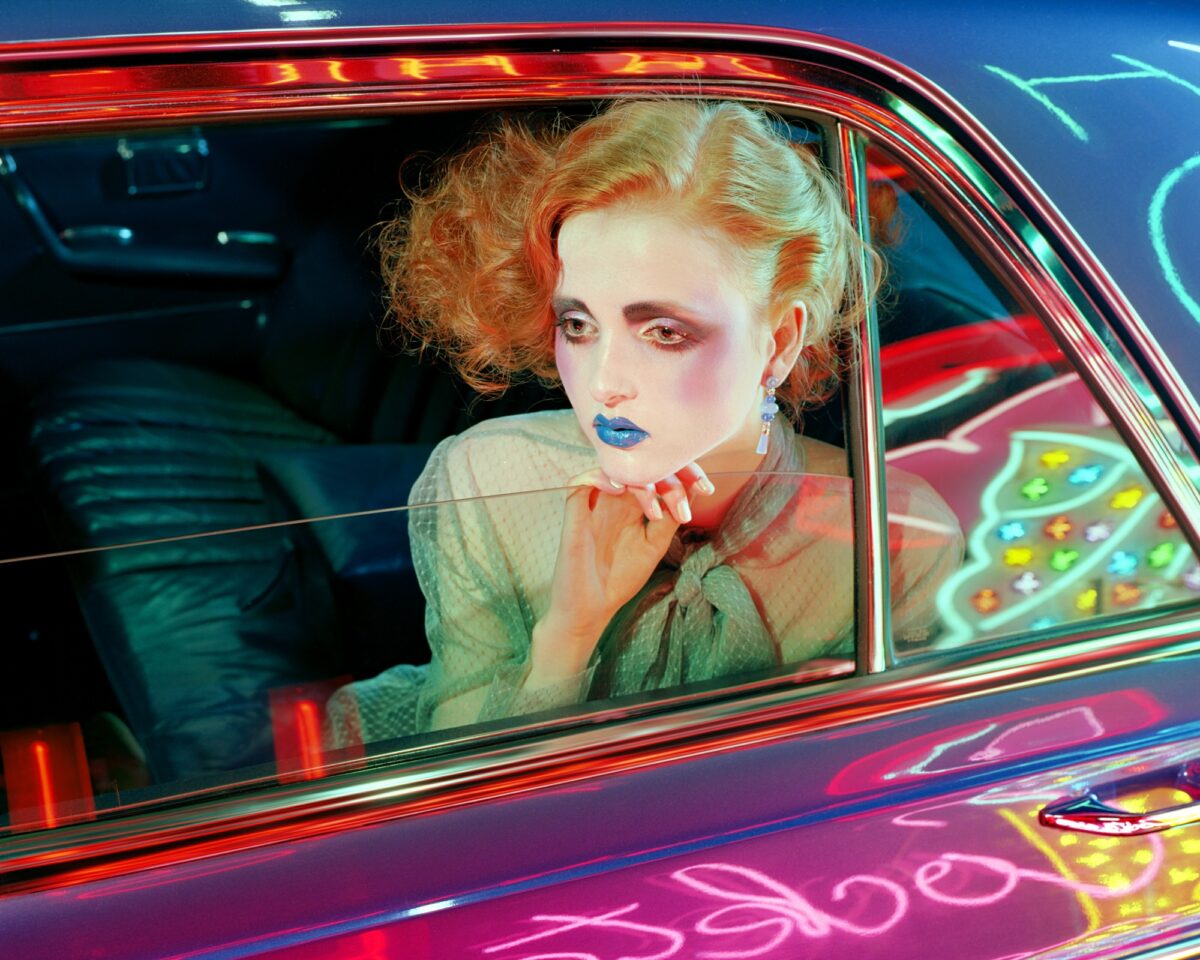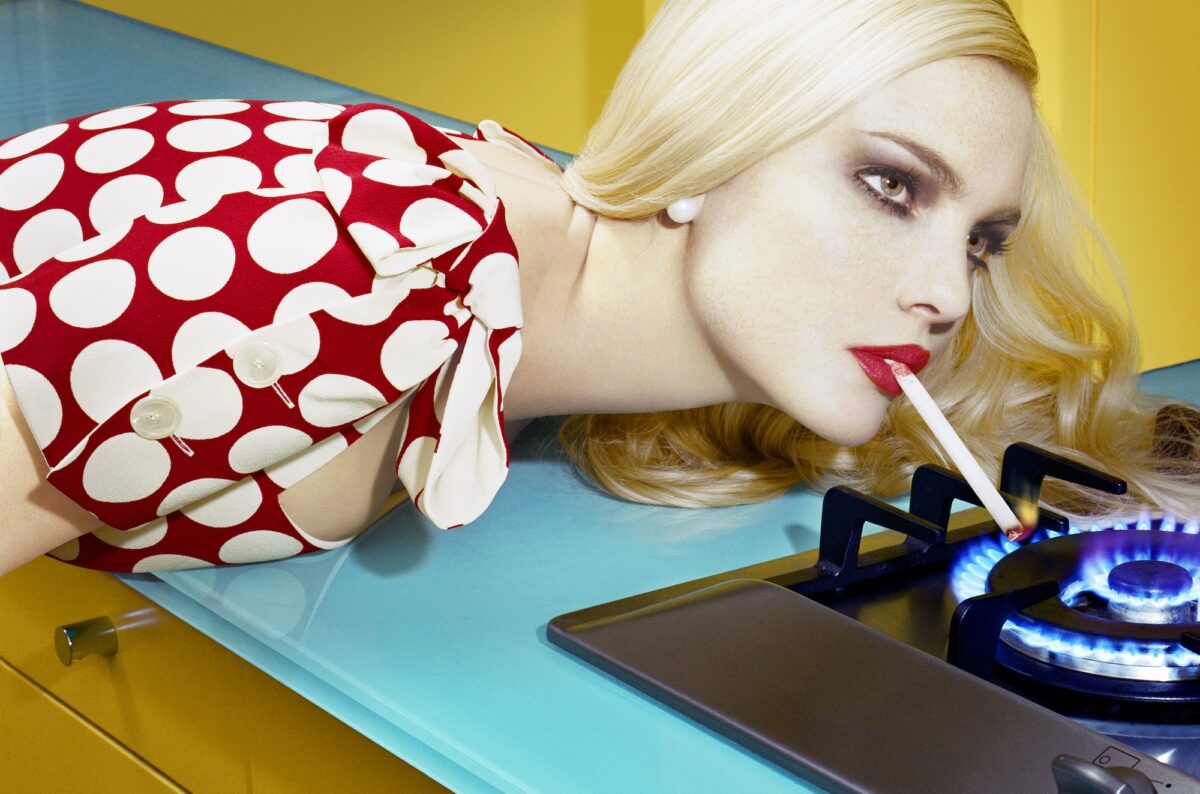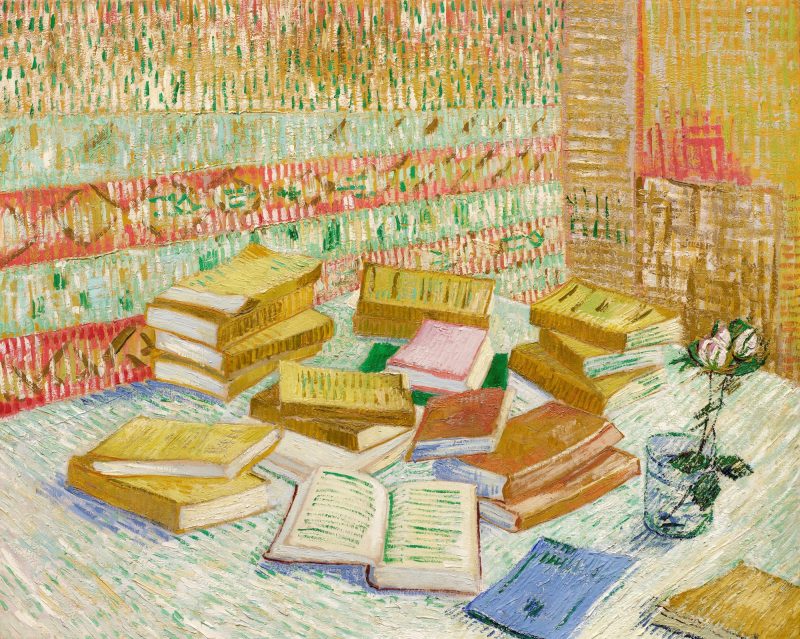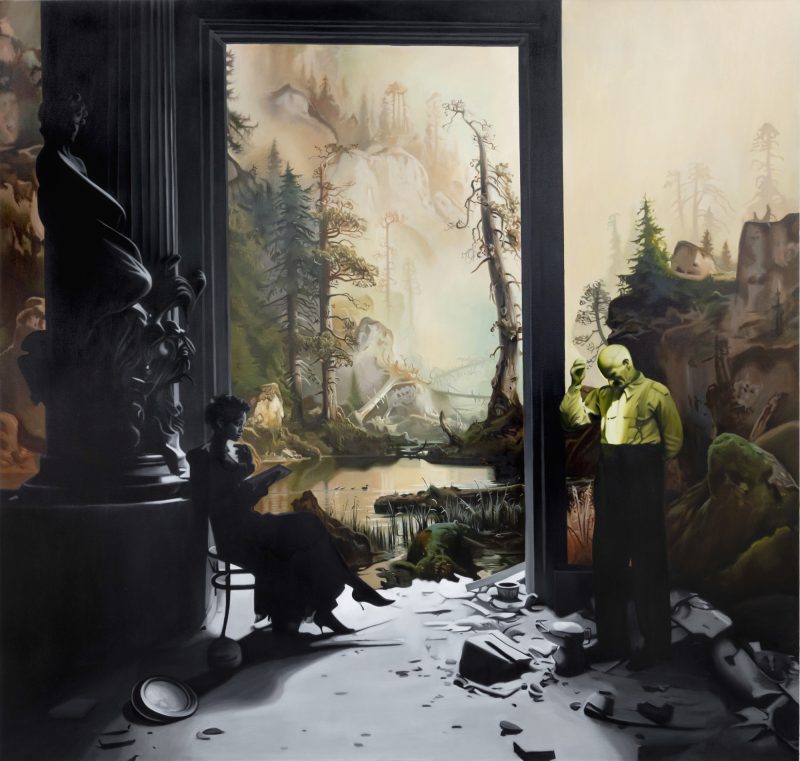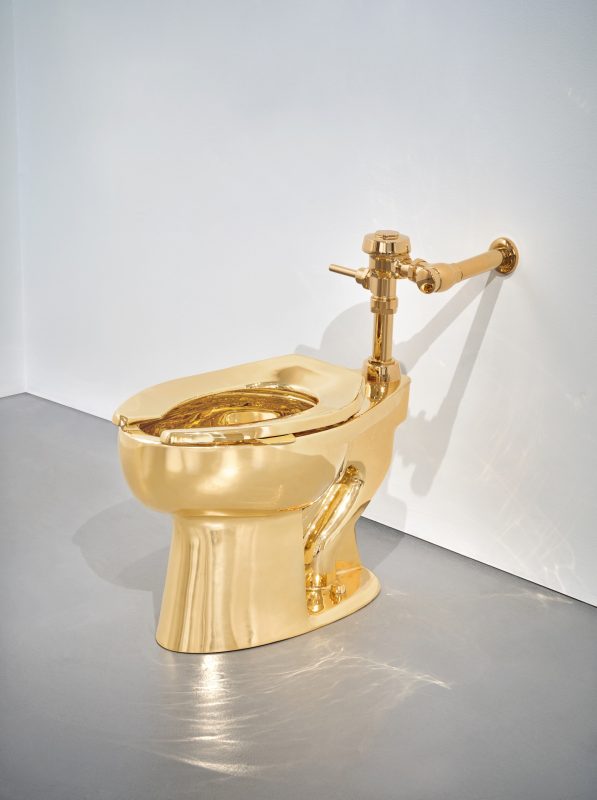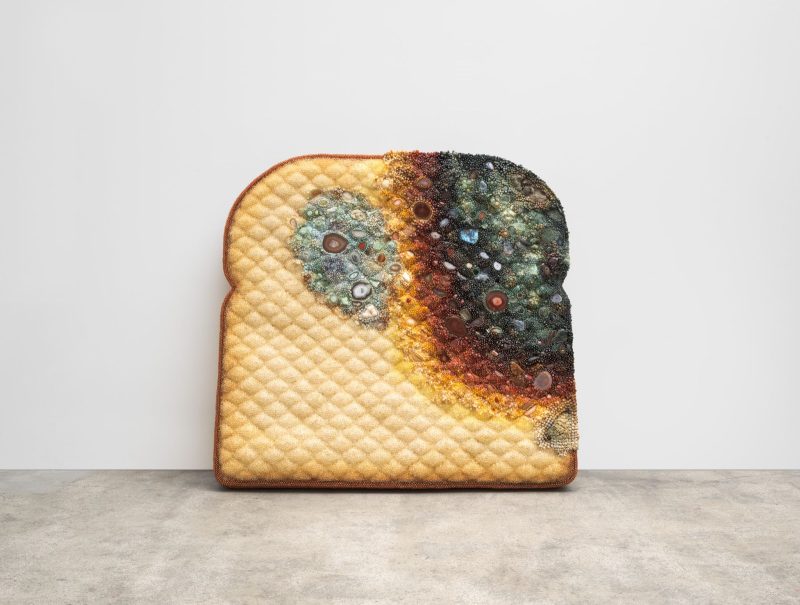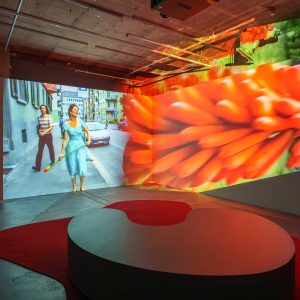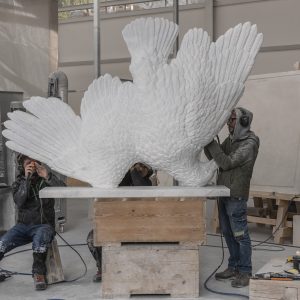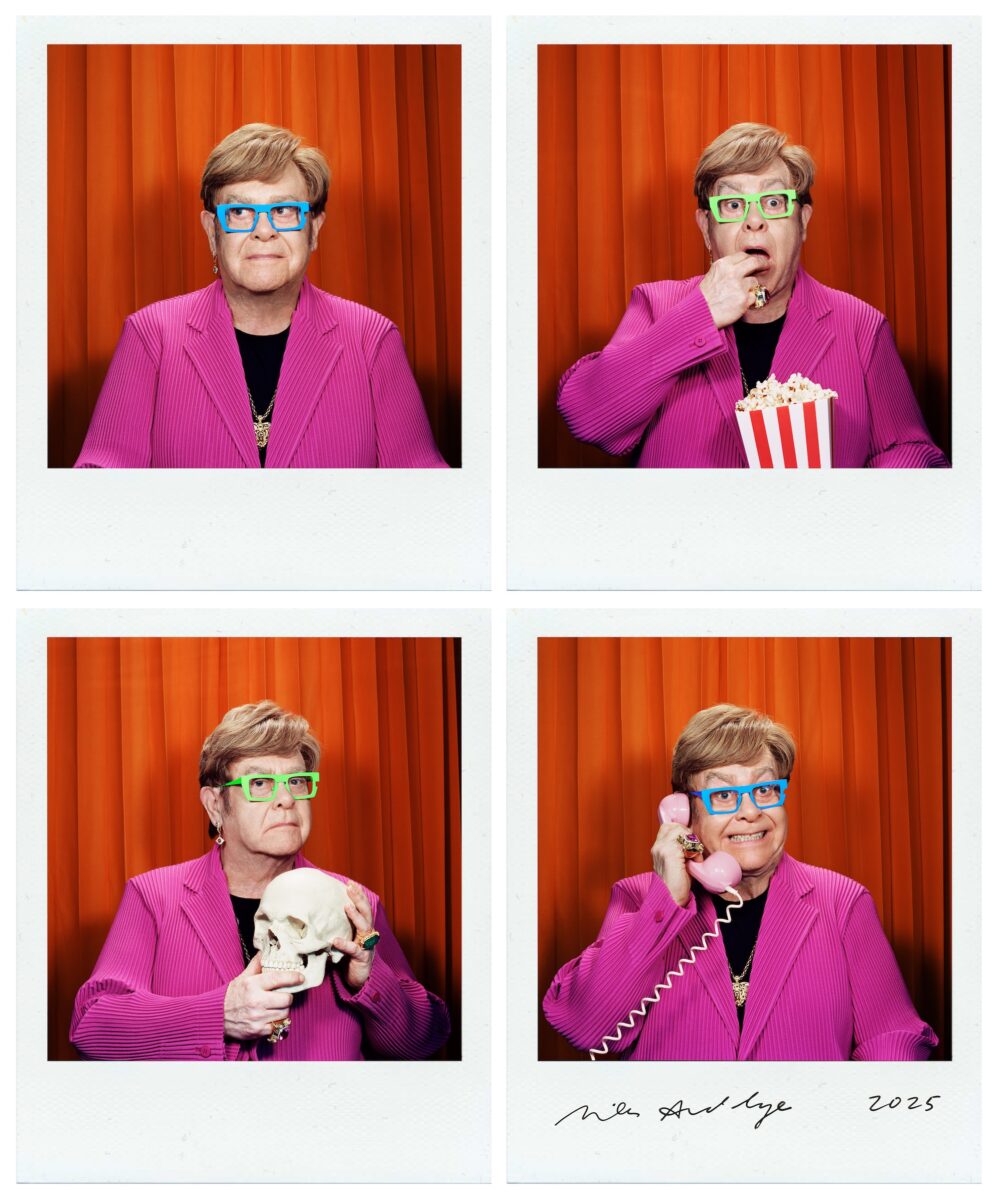
In a unique new project at Sotheby’s, Miles Aldridge will be inviting the public into his vibrant world unlike ever before. For the first time, the photographer and artist will be setting up an off-site studio providing an opportunity for visitors to Sotheby’s to partake in a one-on-one polaroid portrait session with Miles. In true Warholian style, sitters will be able to experience “15 minutes of fame” with Miles who, over the
years, has captured some of the biggest stars of our time: Sir Elton John, Maisie Williams, Viola Davis, Marina Abramovi?, Donatella Versaci and Sophie Turner to name just a few. Miles is set to bring this project, ToiletMiles PaperAldridge: Polaroid Portraits, to Sotheby’s galleries for four days only from 8th-11th April 2025.
At the same time, Sotheby’s and Lyndsey Ingram Gallery will play co-host to an exhibition of works by Miles created over the last 20 years – some borne from his most iconic shoots and others that have never been shown publicly before. Free and open to all, the exhibition runs from 31st March through to 17th April and will go on view in both Lyndsey Ingram’s new gallery space on Bourdon Street and Sotheby’s galleries on New Bond Street.
The exhibition runs in parallel with Miles’ full takeover of Sotheby’s Story Cafe (31st March – 2nd May), which will see him cover the walls – from floor to ceiling – as well as the tabletops, windows, coffee cups (and more) in his bold and kaleidoscopic style.
Miles’ takeover at Sotheby’s and Lindsey Ingram gallery coincides with the launch of “TOILETMILES
PAPERALDRIDGE”, the third edition from TOILETPAPER magazine founders, artist Maurizio Cattelan and
photographer Pierpaolo Ferrari.
We have long admired Miles’s work — his unique vision and the way he transforms reality into a hyper-real, captivating world. Collaborating with him was an opportunity to merge our creative worlds and witness what could emerge from the encounter between his vivid colors and our visual language. Every collaboration is an experiment, and working with Miles was a constant source of surprise.
Maurizio Cattelan
Miles possesses a highly distinctive aesthetic, crafted with cinematic precision, but what fascinates us most is his ability to depict society with a gaze that is as sharp as it is dreamlike. What we share is the idea of using imagery as a tool to explore the contemporary world — not with judgment, but with irony — leaving space for the viewer’s own interpretation.
Pierpaolo Ferrari.
TOILETMILES PAPERALDRIDGE: POLAROID PORTRAITS
I have never done anything like this before, recording a slice of British society through this marathon
Miles Aldridge
polaroid photo session, which feels like a wonderful way to celebrate this project with Sotheby’s, as well as my collaboration with TOILETPAPER. It’s part technicolor dream and part cinematic set with a touch of the subversive. For four days, anyone can experience 15 minutes of fame under my lights, whether that means striking a pose with a retro telephone or disappearing behind a feather boa.
Drawing inspiration from his TIME cover shoot with Sir Elton John (“Icon of the Year” issue, December 2024), Miles will create a specially designed set in Sotheby’s galleries, complete with props (feather boas, oversized glasses, tea cups, retro telephones), lighting and heavy drapery backdrops, which participants will be able to step into, to experience a once-in-a-lifetime polaroid portrait session with Miles himself. Priced at £150 (including VAT), Miles will donate a portion of the funds to The Elton John Aid’s Foundation.
TOILETMILES PAPERALDRIDGE: POLAROID PORTRAITS takes inspiration from August Sander’s lifelong typology project, People of the 20th Century, for which he amassed an archive of photographs capturing the everyday people of the Weimar Republic.
TOILETMILES PAPERALDRIDGE: POLAROID PORTRAITS, 8th – 11th April Sotheby’s
The Process: Sitters will experience a 15-minute session with Miles and will be able to take their polaroid portrait home with them. Please note: all visitors must book the session before arriving at Sotheby’s, and will be given a one-hour time window. Fee: £150 (including VAT), with part of the proceeds going to The Elton John Aid’s Foundation. Book HERE.
Please note: portrait sessions are non-refundable
TOILETMILES PAPERALDRIDGE 31st March – 17th April Sotheby’s
Miles Aldridge Take Over 31st March – 2nd May Sotheby’s Story Cafe
TOILETMILES PAPERALDRIDGE, 24th March – 17th April, Lyndsey Ingram
About the artist
Miles Aldridge’s interest in photography began at an early age when he was given a Nikon F camera by his father. Yet, becoming a photographer had not always been on the cards. In fact, young Miles had hoped to become a film director, starting his career as an illustrator and music video director before ultimately turning to photography in the nineties – and sort of by chance. Miles was in his twenties at the time when his then girlfriend, a model from London, asked him to take her portrait, so off they went to Hampstead Heath where he took, what he calls, a “very ordinary photograph.” Finding its way into her portfolio, his portrait was soon seen by the editors of Vogue who immediately asked for an introduction to Miles. His first commission quickly led to the next and within six months he was travelling to the United States to shoot covers for major publications: “I landed in this field at a moment when British photography was exploding, in part due to the rise of grunge culture. The fact that I was from London,
had a British accent and a camera ticked all the right boxes in New York. I was known as the grunge photographer.”
It was only when Miles started working with Franca Sozzani, the legendary editor-in-chief of Vogue Italia, that fashion photography truly became his calling. He worked with her for 16 years – often alongside Helmut Newton, Bruce Weber, Peter Lindbergh and later Tim Walker – and in the process was able to marry his love of cinema with his newfound admiration for fashion. Franca taught him that fashion photography was much more than just showing the clothes, it was about storytelling. From here, Miles would approach his craft just as a director would approach a cinematic film: each “scene” meticulously arranged and constructed with painstaking attention to lighting, composition and colour. His photographs become frames snatched from a broader story, the mise-enscènes created by Alfred Hitchcock and David Lynch never far from his mind.
Domesticity remains a recurring theme in Miles’ photographs, yet always with a sinister twist. His glamorous, frequently eroticised images probe society’s idealised notions of domestic bliss where dark undercurrents swirl beneath a flawless surface. A woman is often the focal point of his compositions, navigating a world that oppresses her. She can be found in kitchens, supermarkets, bedrooms and playgrounds, surrounded by the detritus of a dinner party or smashed broken glass, or with other “actors” they seem to completely ignore. For Miles, these women recall his mother who he remembers from childhood would often wear an “un-emotional, mask-like face” but deep down would be battling with her own internal struggles.
Much of Miles’ oeuvre not only references film culture but also makes subtle references to the art historical canon. His portraits, for instance, of Lily Cole and Maisie Williams draw inspiration from Northern Renaissance masters such as Albrecht Dürer and Hans Holbein, while ‘Ophelia’ recalls John Everett Millais’ Pre-Raphaelite masterpiece of the same name housed in Tate Britain’s collection. Diane Arbus and the cinematic nature of Cindy Sherman’s work continue to inspire Miles in his practice: “Cindy Sherman and Diane Arbus have been hugely influential on my practice. They are women who were not just glamazons in the photographic landscape. Instead, they pointed their cameras at women who were, in Sherman’s case, invented by her, and in Arbus’ case, women that she found on the street. Their contemporaries were aiming their cameras at stunning beauties, whereas they were aiming theirs at those women who might have been considered ‘outsiders’ at the time. There is a strangeness in their
behaviour and a strangeness in their dress. I love that peculiarity.”
